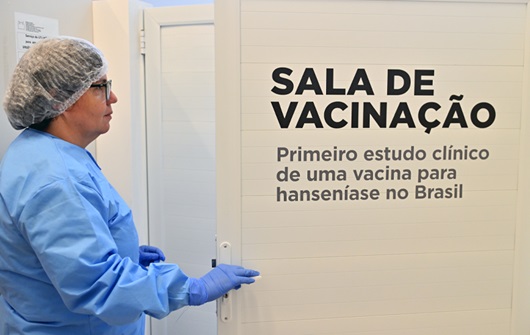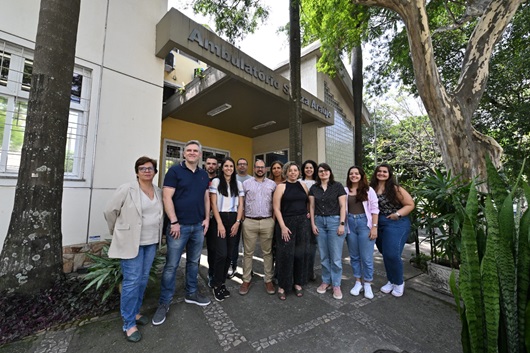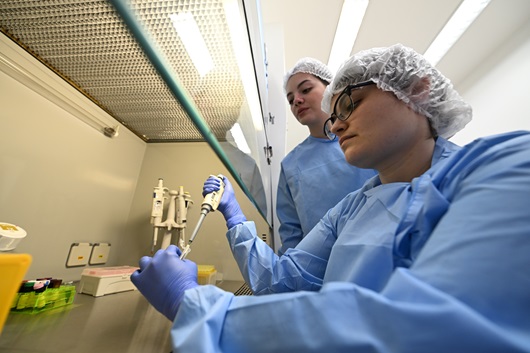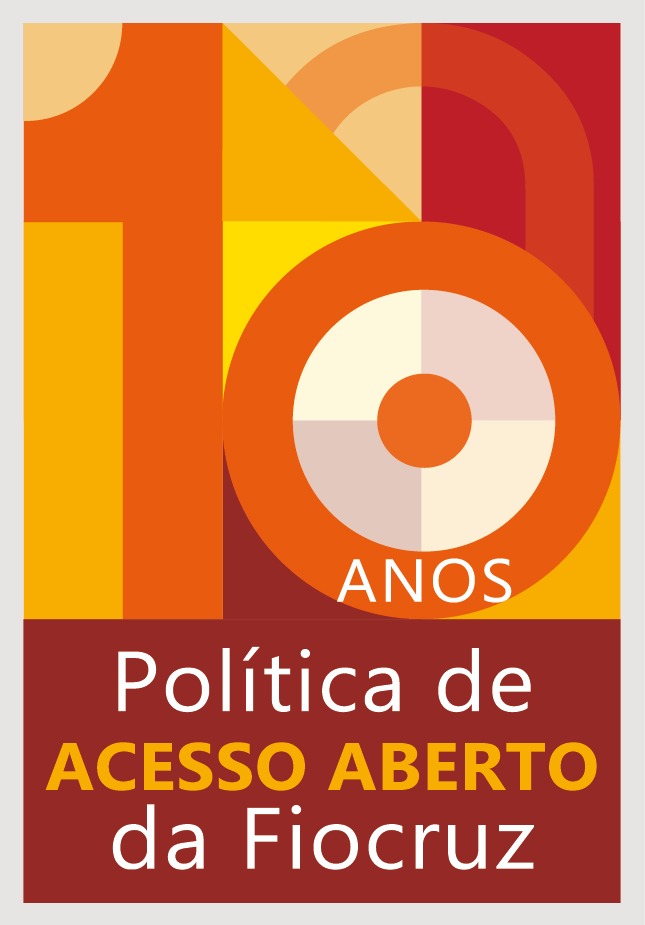Fiocruz will lead the first clinical trial of a leprosy vaccine in Brazil
22/10/2024
Maíra Menezes (IOC/Fiocruz)
An unprecedented leprosy vaccine will be tested in Brazil by the Oswaldo Cruz Institute (IOC/Fiocruz). Called LepVax, the vaccine will be the first for the disease assessed in the country during clinical trials. The authorization to begin the trials was granted by the National Health Regulatory Agency (Anvisa) on Monday (10/14).
IOC/Fiocruz will lead the first clinical test of a vaccine for leprosy (photo: Gutemberg Brito)
The Institute was chosen as the clinical center responsible for the trials due to its significant scientific contribution to Hansen's disease studies. The Leprosy Laboratory at IOC/Fiocruz is involved in research and patient care within the National Reference Service for Leprosy and the Ministry of Health. With a high capacity to conduct clinical studies, the Laboratory has a multidisciplinary team and the infrastructure for immunological and molecular analysis.
The Immunobiological Technology Institute (Bio-Manguinhos/Fiocruz) is the sponsor of the clinical trial. The LepVax project is funded by the US charity American Leprosy Missions (ALM), which has led the development of the vaccine since 2002. The study in Brazil is also funded by the Ministry of Health and the Japanese Global Health Innovative Technology Fund(GHIT Fund). Japan's Sasakawa Health Foundation is a partner in the research.
If the results of the studies are positive, the leprosy vaccine could become part of the national immunization schedule in the future. Brazil is the country with the second highest number of cases of the disease in the world, behind only India. In ten years, from 2014 to 2023, there were almost 245,000 new infections, according to the Ministry of Health. In 2023 alone, there were 22,773 new cases.
Surrounded by prejudice, Hansen's didease is a neglected disease that can cause serious damage to the skin and nerves. With treatment available through the Unified Health System (SUS), the disease is curable. However, many cases are identified late, when there is already damage that impairs the patient's quality of life and ability to work.
The deputy head of the Leprosy Laboratory at the Oswaldo Cruz Institute (IOC/Fiocruz) and scientific leader of the LepVax clinical trial, Verônica Schmitz, considers the study in the country to be historic. "Brazil concentrates 90% of leprosy cases in the Americas. Every four minutes, a new case of leprosy is reported in the world. The WHO has already pointed out that we need new tools to control leprosy and people affected by leprosy deserve a vaccine," says the immunologist.
According to the World Health Organization (WHO), the infection occurs in 120 countries, with around 200,000 new cases every year. The disease mainly affects vulnerable populations and receives little investment. Although one of the oldest diseases in the world, with reports of cases more than four thousand years ago, there is still no vaccine. Immunization with the BCG vaccine is indicated to prevent infection in people at higher risk, but protection is partial.
"Sustained elimination of leprosy as a public health problem requires a vaccine. In this scenario, LepVax has emerged as a prophylactic and therapeutic vaccine that could contribute to the goals of controlling the disease," says the head of the Leprosy Laboratory at IOC/Fiocruz, Roberta Olmo.
Part of the team involved in the research alongside the scientific leader of the study (photo: Gutemberg Brito)
First specific vaccine
LepVax was developed by the Access to Advanced Health Institute (AAHI), an American non-profit biotechnology research institute. It is the first specific vaccine against the bacterium Mycobacterium leprae, which causes leprosy. The formulation was developed using one of the most modern technologies for the production of immunizers, called protein subunit.
Pre-clinical tests have shown promising results. In mice vaccinated with LepVax, the infection rate was significantly reduced, even when exposed to a large amount of bacteria. When the vaccine was administered after infection, motor and sensory nerve damage was delayed in armadillos, which are considered a model for studies on the neurological form of leprosy. These results signaled the potential for using the vaccine to prevent and treat the disease.
The first stage of the human trial, called phase 1a, was carried out in the United States, with the immunization of 24 healthy volunteers. The study demonstrated the vaccine's safety, with no serious adverse events reported. It further pointed out to immunogenicity, i.e. the ability to stimulate an immune response.
Trial in Brazil
The test in Brazil will be the first for LepVax in a territory with leprosy transmission. Classified as a phase 1b clinical trial, the study will aim to confirm the safety and immunogenicity of the vaccine. According to Verônica, this assessment is important because, considering the country's epidemiological scenario, it is possible that the immune system of a large proportion of Brazilians has had previous contact with mycobacteria, which may influence the response to the vaccine. The scenario is the same in other leprosy-endemic countries, where the immunizer could be adopted.
"In Brazil, even people who have never had leprosy may have come into contact with M. leprae, and we have circulation of other mycobacteria, such as the one
that causes tuberculosis. Brazilians are also vaccinated with BCG at birth. It is a different reality from the United States, where there is no transmission of the disease," explains the immunologist.
The study will involve 54 healthy volunteers. In addition to assessing the safety and immunogenicity of the vaccine, the research will investigate the safety of two formulations of the vaccine, with low and high doses of antigen. To this end, participants will be randomly divided into three groups. Two groups will receive the vaccine, one at a low dose and the other at a high dose. The third group will receive a placebo - a saline solution that has no biological effect.
In line with global protocols for this type of research, during the study, participants and researchers will not know which group each individual is included in. "In phase 1a, in the United States, all participants were vaccinated for an initial assessment of the vaccine's safety. Now, in phase 1b, we will have the opportunity to do a randomized, double-blind, placebo-controlled trial. This is the gold standard research method, which allows us to compare the vaccinated groups with the control group," says Verônica.
Regardless of the low or high dosage, vaccination will be carried out in three applications, with an interval of 28 days between them, just as in the American test. After that, the participants will be followed up for a year, totaling 421 days of clinical trial.
Recruiting volunteers
The study was approved by the IOC's Human Research Ethics Committee (CEP Fiocruz/IOC) and by the National Research Ethics Commission (Conep). After Anvisa's approval, the vaccine will be imported from the United States to Brazil and volunteers will begin being recruited.
To take part, it is necessary to be between 18 and 55 years old and in good health. At this stage of the study, volunteers must not be people who have already had the disease or who have close contact with leprosy patients. The experimental immunization cannot be applied to pregnant women either. Participation in the research will last approximately 14 months. During this period, the volunteers will have to attend eleven appointments, three of which will be for administration of the vaccine and the others for follow-up. During the visits, participants will undergo a clinical assessment and blood and urine tests.
By law, volunteers cannot be paid for taking part in the research. Reimbursement is provided for costs such as travel and meals. Participants will also receive medical assistance, with 24-hour telephone contact, should they need immunization-related assistance.
The vaccination and follow-up of the participants will take place at the Souza Araújo Outpatient Clinic, run by the IOC/Fiocruz Leprosy Laboratory, on the Fiocruz campus in Manguinhos, North Zone of Rio de Janeiro (Av. Brasil, 4.365).
In addition to having a specialized team, the unit is certified by the National Accreditation Organization (ONA), which certifies the application of organizational guidelines and policies for safe, quality care. A newly opened vaccination room in the space will be used during the research.
Assessment of results
The study's medical leader, dermatologist and researcher at the Souza Araújo Outpatient Clinic, Cássio Ferreira, explains that the vaccine's safety will be assessed through clinical follow-up and laboratory tests. "In the United States, the results were very positive, with no major adverse events. The reactions recorded, such as pain at the injection site, tiredness and headache, are common in immunizations. This first demonstration of safety was crucial for the research to advance to phase 1b in Brazil," emphasized Cássio.
The blood samples collected will also be used to analyze the immune response triggered by the vaccine. These analyses will be carried out at the IOC/Fiocruz Leprosy Laboratory, which has prepared a clinical research room for the tests. To ensure the quality of the results, the equipment that will be used for analysis has been certified by specialized companies. The procedures were validated using samples from the clinical trial carried out in the United States. The team follows good laboratory practice procedures, which are required by Anvisa.
To analyze the vaccine's immunogenicity, the researchers will measure the amount of antibodies present in the volunteers' serum (the liquid part of the blood without the clotting molecules). They will also investigate the activation of defense cells, especially the so-called T cells.
"In leprosy, T cells are more important than antibodies in controlling the growth of the bacteria. Thus, the factor that will give a preliminary indication of the vaccine's potential for protection - known as the correlate of protection - will be the dosage of molecules produced by active T cells," says the immunologist.
The study has an independent follow-up committee, which includes experts with no connection to Fiocruz. If the phase 1b test confirms LepVax's good performance, the researchers are already planning the next stage of the research, which will also be carried out by Fiocruz in Brazil.
In the phase 2a clinical trial, the plan is to vaccinate 582 patients with leprosy to assess the safety of the immunization in individuals infected with M. leprae and the therapeutic action of the immunizer. "The request for authorization for phase 2a of the study will be submitted to Anvisa after the completion of the initial safety analyses of the vaccine in the phase 1b trial." The data will be assessed by the study's independent follow-up committee and then sent to the regulatory agency," says Verônica.
The immune response of the volunteers will be analyzed by the Leprosy Laboratory at IOC/Fiocruz (photo: Gutemberg Brito)
History of contributions
The IOC/Fiocruz Leprosy Laboratory has a history of significant actions to tackle the disease. The unit was a pioneer in the administration of multidrug therapy in Brazil. It was also the first to adopt a 12-dose treatment, having carried out studies that contributed to the recommendation of this regimen, which is currently recommended by the WHO.
"Conducting the LepVax clinical trial at our center is a good reflection of the level of maturity we have achieved over all these years, which means that today we have the recognition of the national and international scientific community. It is also a reflection of our commitment to policies aimed at quality care, attested to by the certification of the Souza Araújo Outpatient Clinic," says Roberta.
One of the group's most recent contributions was the development of the NAT-HANS diagnostic kit, based on the detection of M. leprae DNA. The product was adopted by the Unified Health System (SUS) and began to be distributed to the Central Public Health Laboratories (Lacens) last year. The innovation was developed by the IOC/Fiocruz Laboratory in partnership with the Carlos Chagas Institute (Fiocruz-PR) and the Paraná Molecular Biology Institute (IBMP).
Leading the development of the NAT-HANS Kit was researcher Milton Osório Moraes, former head of the Leprosy Laboratory, who passed away in 2022. The LepVax study in Brazil was also one of the scientist's projects. Internationally recognized as a reference in leprosy research, he was approached by the vaccine's developers to carry out the product's clinical trial. Between 2019 and 2022, Milton took part in organizing the research in Brazil and submitting the application for authorization to Anvisa.
"During this period, Milton was diagnosed with cancer and we had the COVID-19 pandemic. Even so, he went ahead with the vaccine project. His death was a great loss for us and for science, but he prepared us to take this research forward," says Verônica.
Leprosy
Leprosy affects the skin and nerves. The disease usually initially causes spots or lumps on the skin, with changes in sensitivity. Without treatment, neurological damage can progress, impairing the ability to move, especially in the hands and feet, which affects patients' quality of life and ability to work. Lesions can also affect the face, reinforcing the stigma, which is another of the great evils of the disease.
The BCG vaccine, produced with an attenuated version of the bacterium Mycobacterium bovis, offers partial protection against leprosy and tuberculosis. The WHO recommends immunization at birth in countries with a high burden of these diseases, as is the case in Brazil.
Since 1981, leprosy treatment has been based on a combination of antibiotics. The so-called polychemotherapy cures the infection and has changed the landscape of the disease. Globally, records have fallen by 95%, but in recent years experts have drawn attention to the stagnation in the fight against the disease. Leprosy continues to cause new cases and permanent deformities.
To change this scenario, the WHO published a new strategy against the disease in 2021, which aims to interrupt the transmission of the infection by 2030. In Brazil, the disease is still considered a public health problem, due to the high number of cases. Tackling the disease is a target of the Interministerial Committee for the Elimination of Tuberculosis and Other Socially Determined Diseases (Cieds), which was set up in June. Led by the Ministry of Health, the group includes representatives from nine ministries to tackle neglected diseases, which are often associated with poverty and other social determinants.
For leprosy, targets include interrupting transmission in 99% of municipalities, eliminating the disease in 75% of municipalities and reducing the absolute number of new cases with apparent physical disability at the time of diagnosis by 30% by 2030. According to the experts, the fight against leprosy requires a commitment to applying available strategies, overcoming neglect, and at the same time seeking innovations against this age-old infection. “An effective vaccine is one of the tools capable of speeding up progress towards a leprosy-free future,” says Verônica.
International cooperation
Led by the American Leprosy Missions (ALM), LepVax has been developed in collaboration with almost 30 institutions from different countries since 2002. In addition to IOC/Fiocruz, Bio-Manguinhos/Fiocruz and Fiotec, cooperating with the project are: Access to Advanced Health Institute (AAHI), Aeras, Anesvad, Covance, Damien Foundation, DFnet, Effect Hope, FairMed, German Leprosy and Tuberculosis Relief Association (DAHW), Global Health Innovative Technology
Fund (GHIT), H.L. Snyder Medical Foundation, ILEP Federation, Leonard Wood Memorial, Leprosy Relief - Canada, Leprosy Research Initiative, National Hansen's Disease Program, National Institute of Allergy and Infectious Diseases (NIH), P.S. and Ouida Bailey Foundation, Raoul Follereau Foundation, St. Francis Leprosy Guild, Sasakawa Health Foundation, The Leprosy Mission - International, Turing Foundation and Until No Leprosy Remains (NLR). The donors who maintain ALM also contributed to the research.


